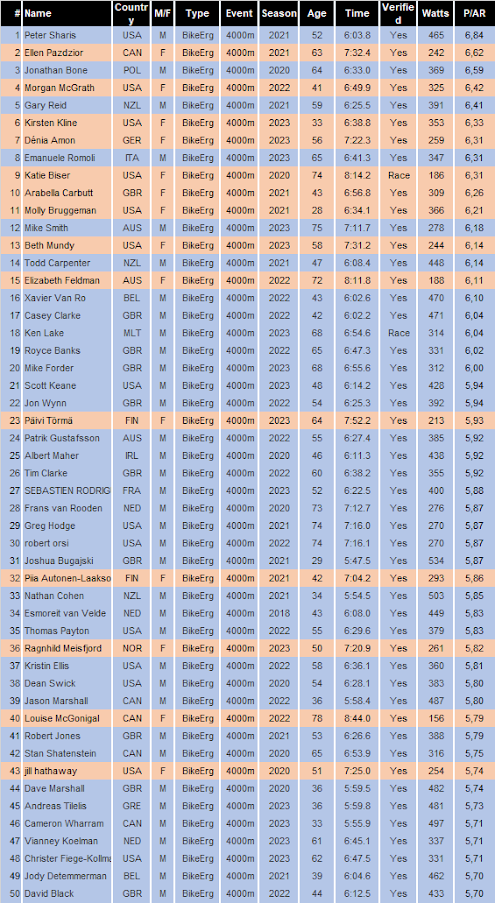How to create a level playing field across ages
The P/AR ratio
Vianney Koelman
Dutch Eindhoven Rowing Association
Beatrix
Cyclists are used to a power-to-weight (measured in Watts per kilogram) performance metric. The power-to-age-reserve ratio (abbreviated as P/AR and measured in Watts per year) provides us with a similar metric. The objective of this novel metric is to create a level playing field across sexes and ages for ergometer events such as RowErg and BikeErg competitions.
So what is 'age-reserve'? We are all aware that once we enter our thirties, the power our bodies are capable of generating will gradually drop. Every year we grow older, the odds are our power figures will be less than those from a year before. This also holds for world-class athletes. As an example, below figure shows the power delivered by male and female RowErg 2k world record holders against the athlete’s age.
Straight lines fit nicely through both sets of data points. These straight lines effectively represent the age decline of world-record level fitness for males and females. When extrapolated to high age, both straight lines will cross the age-axis, indicating a vanishing power figure. This happens at around an age of 120. So the age at which world-record level fitness drops to zero corresponds to the maximum age achievable by humans (also roughly 120 years), as it should be.
The age-reserve measures the number of years an individual is away from the age above which the athlete's power is expected to vanish. In other words, the age-reserve for an individual equates to 120 minus the age of that individual.
In above plot, as both male and female power performances follow straight lines that crosses the age-axis at the same age of 120, it follows that by a re-scaling both straight lines can be made to overlay. Effectively, if one multiplies the powers generated by females by 1.56, the female and male performances nicely overlay. We use these sex-corrected powers to define the P/AR ratio. So, for males this ratio is the power generated divided by the age-reserve. For females it is 1.56 times the power generated divided by the age-reserve.
By construction, this power-to-age-reserve metric creates a level playing field across the sexes and across a wide range of ages. This is demonstrated in below figure for the indoor rowing world-record 2k performances. This time these performances are not expressed in terms of raw power (Watts) but in terms of the power-to-age-reserve (P/AR) ratio (Watts-per-year).
.png)
.jpg)



Comments
Post a Comment